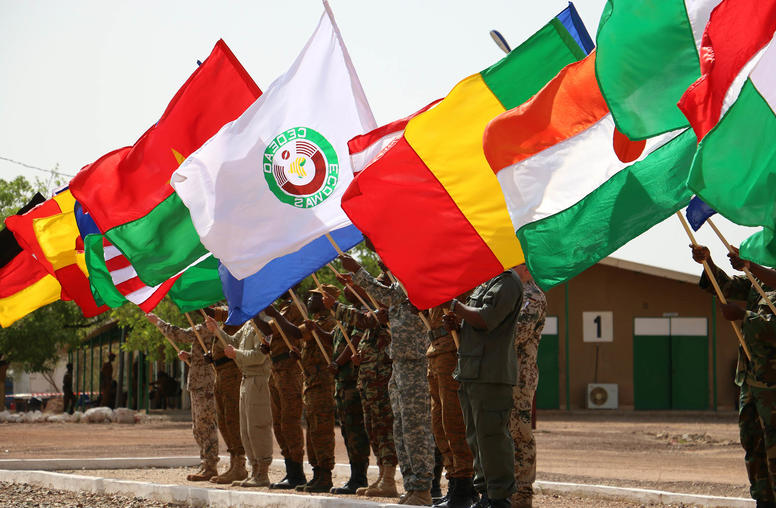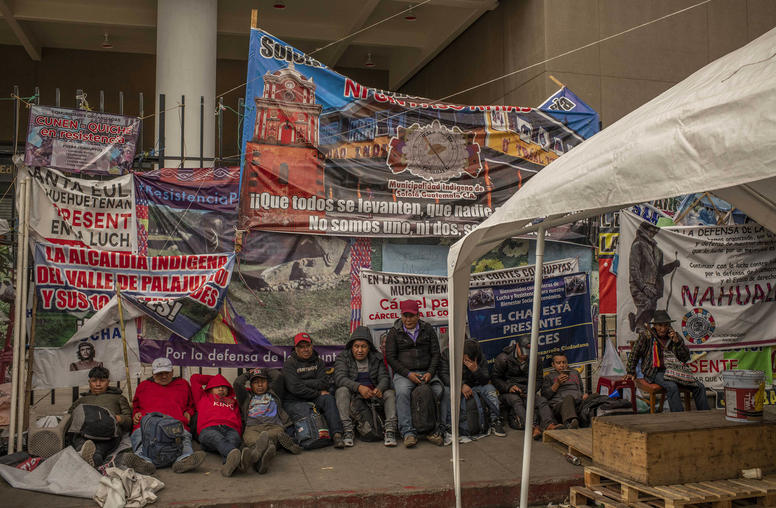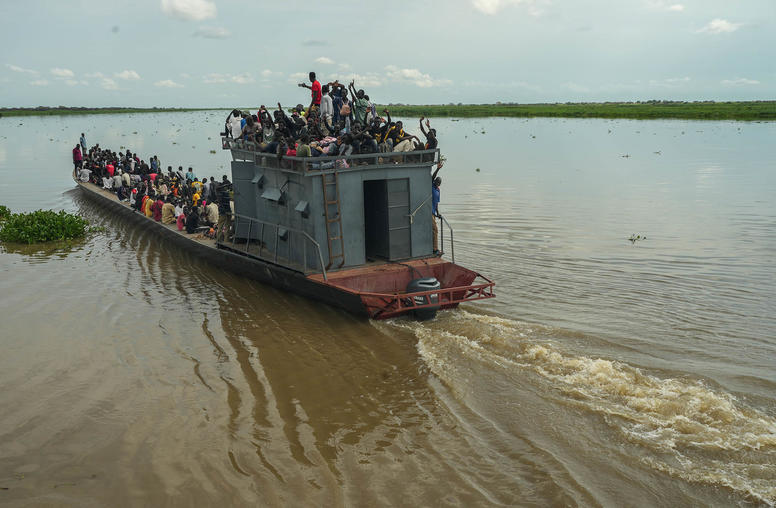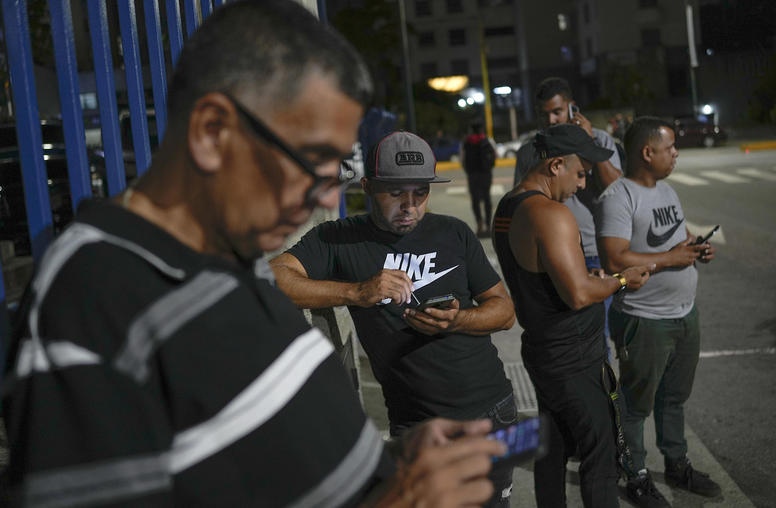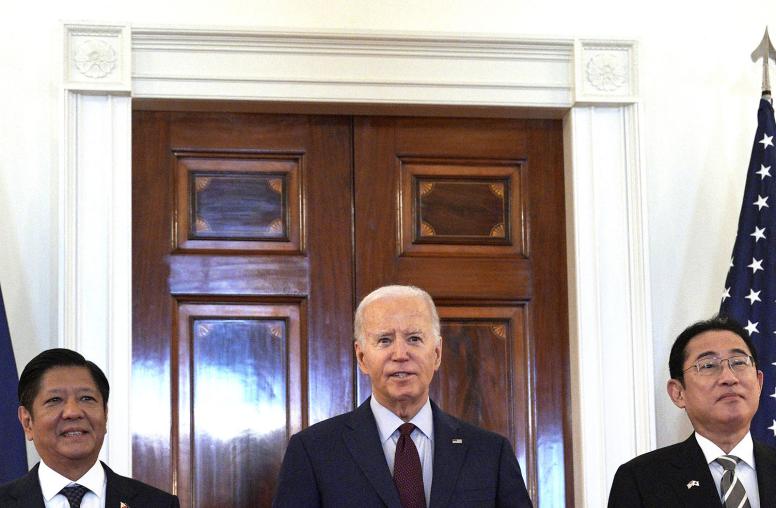Afghanistan: Not Lost, But Needs More Attention
In this report prepared in anticipation of the June 2008 Afghanistan donor conference, Afghanistan Senior Fellow Mohammad M. Stanekzai analyzes the country's challenges and offers policies to aid economic development, project implementation, coordination and security.
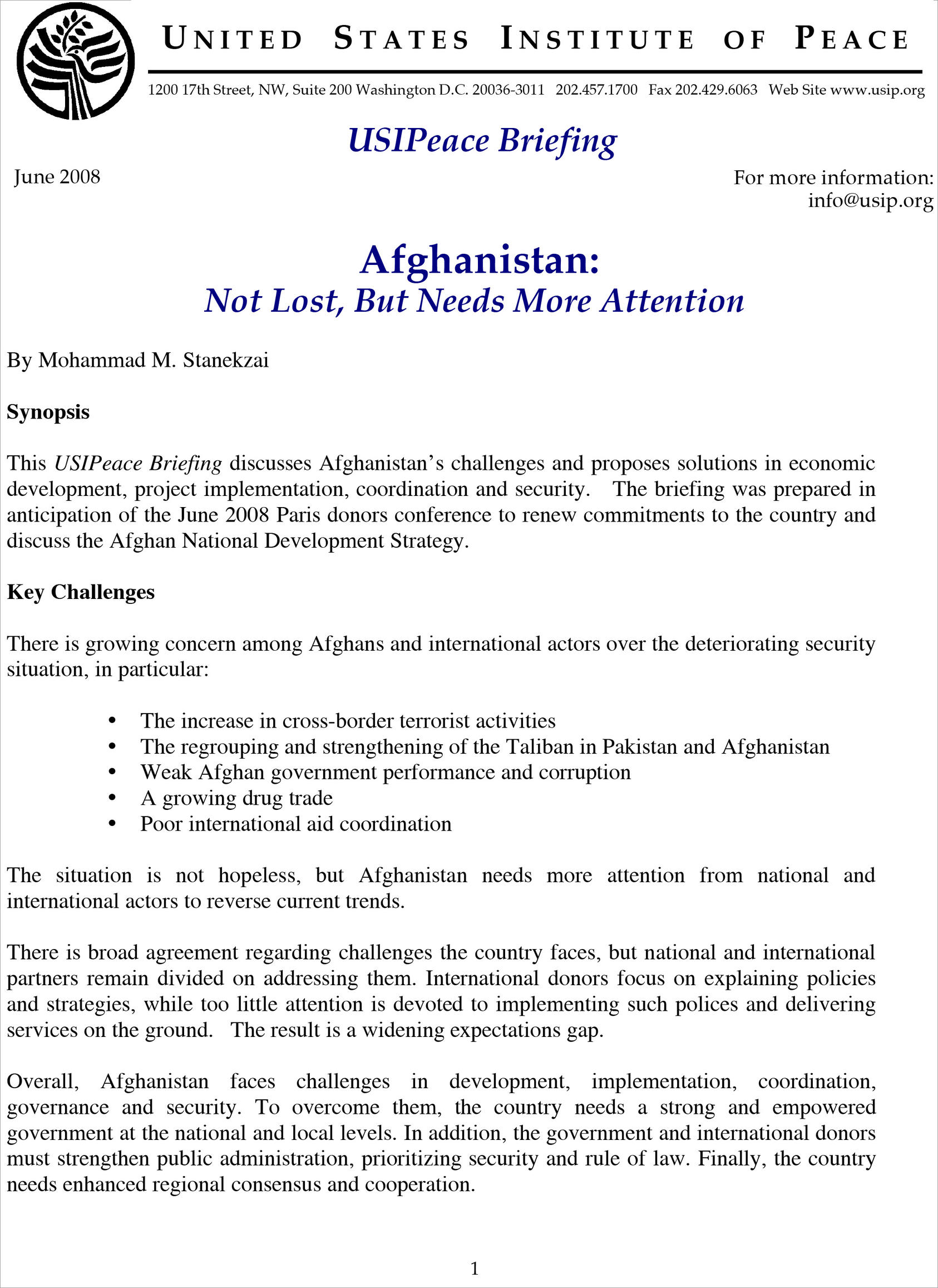
Synopsis
This USIPeace Briefing discusses Afghanistan’s challenges and proposes solutions in economic development, project implementation, coordination and security. The briefing was prepared in anticipation of the June 2008 Paris donors conference to renew commitments to the country and discuss the Afghan National Development Strategy.
Key Challenges
There is growing concern among Afghans and international actors over the deteriorating security situation, in particular:
- The increase in cross-border terrorist activities
- The regrouping and strengthening of the Taliban in Pakistan and Afghanistan
- Weak Afghan government performance and corruption
- A growing drug trade
- Poor international aid coordination
The situation is not hopeless, but Afghanistan needs more attention from national and international actors to reverse current trends.

French Foreign Minister Bernard Kouchner, second right, gestures as he addresses Afghan President Hamis Karzai, background center, after signing a letter of intent during the Afghanistan donors conference in Paris on June 12, 2008. (AP Photo)
There is broad agreement regarding challenges the country faces, but national and international partners remain divided on addressing them. International donors focus on explaining policies and strategies, while too little attention is devoted to implementing such polices and delivering services on the ground. The result is a widening expectations gap.
Overall, Afghanistan faces challenges in development, implementation, coordination, governance and security. To overcome them, the country needs a strong and empowered government at the national and local levels. In addition, the government and international donors must strengthen public administration, prioritizing security and rule of law. Finally, the country needs enhanced regional consensus and cooperation.
There is no need to create new national or international mechanisms. Instead, Afghanistan and the international donor community must build on the experience acquired over the past six years and combine it with the principles agreed to in the Rome High Level Forum (2003), the Paris High Level Forum (2005) and the Afghanistan Compact on aid harmonization and aid effectiveness (2006). Without Afghan ownership over reconstruction, stabilization will fail.
International assistance is most effective when it bolsters the national budget process and enhances delivery and mutual accountability and strengthens local institutions. This ensures sustainability and broad participation in the five-year Afghan National Development Strategy (ANDS) and Afghan National Priority Programs (NPPs).
This briefing:
- Offers proposals to improve local ownership at the national and sector-specific levels
- Discusses international coordination challenges.
- Suggests a mechanism to improve synergy among key international players, with particular attention to the role of the Provincial Reconstruction Teams (PRTs).
- Discusses Afghanistan’s transitional security challenges. Without a regional approach, lasting security and peace are unattainable.
Progress Thus Far, Strengthening Development and the Afghanistan Reconstruction Trust Fund
Progress thus far
Reconstruction has brought some significant economic and social improvements, for example:
- The Afghan Gross Domestic Product and per capita income1 have grown annually by double digits since 2001.
- Close to 80 percent of Afghans now have access to primary health care (only 7 percent did in 2001).2
- Child mortality has been reduced by 18 percent.
- School enrollment has increased to 6.5 million; 35 percent of whom are girls.3
- Transport infrastructure has improved. Eighty-four percent (2818 km)4 of the ring road network is open to traffic; fifty-nine percent is paved (1983 km).
- Nearly two million refugees have returned home—the largest such repatriation ever.
- Approximately 19,000 villages democratically elected community groups and have received block grants through the Afghanistan National Solidarity Program (NSP), a massive government effort to reach rural communities nationwide.
- Communication infrastructure and services are expanding rapidly, covering 75 percent of the country. There has been a remarkable increase in telephone subscribers from 35,000 to more than 4.5 million since 2001.
- Private sector investment in telecom, construction and small industries is generating tangible results. The mining and natural resources sector has attracted an investment of more than $2.8 billion in the Logar copper reserves.
Milestones in state-building have been:
- The 2004 adoption of the new constitution
- The October 2004 presidential election
- The September 2005 parliamentary and provincial elections
- The December 2005 inauguration of the new National Assembly
The freedom of press and the visibility of women in the social, political and economic fields also have shown remarkable progress. Further, more Afghanistan now ranks higher than many middle income countries in several key areas of financial management, according to the latest assessment from the PEFA group.5
Despite these achievements, stakeholders acknowledge that much more remains to be done. Unease among the Afghan people is mounting due to specific problems related to the lack of security and economic opportunities, including: soaring food prices, corruption, narcotics, weak government, poor civil-military coordination, increased civilian casualties and a culture of impunity. In a situation with increasing extremes of wealth and poverty, public support for national and international actors is diminishing.
The international donor community and the Afghan government have spent several years formulating a development strategy, culminating in the 2006 adoption of the Afghanistan Compact and the April 2008 ANDS. The time has come to shift the debate to implementation and delivery.
The government and donors recognize that providing basic services across all sectors is key to stabilizing Afghanistan and that a national budget process is the most effective means to coordinate aid. The Afghanistan Reconstruction Trust Fund (ARTF) was established in May 2002 to coordinate financial mechanisms for recurring budgets and priority reconstruction programs and projects.6 ARTF is meant to ensure that public services in fields such as health, education, energy, water, rural rehabilitation and development receive predictable funding streams under government auspices. However, donors have also been wary of direct aid to weak governments; such assistance has a long track record of inefficiency and corruption. ARTF is a mechanism to avoid such pitfalls, facilitate a national budget process and ensure the introduction of a multifaceted accountability mechanism.
Unfortunately, the ARTF is underused, especially by large donors. Since its inception, the ARTF received less than $2.3 billion. This figure is less than 16 percent of total Afghan reconstruction funds. Donors are reluctant to use the fund because of concern that the government lacks absorption capacity. They are also afraid they will lose control over the use of such funds (and the accompanying visibility). Finally, donors also face competing demands from their own international development agencies. While the Netherlands, the UK and Canada funnel the bulk of their aid through the fund, major donors such as the U.S., the EU and Japan should be encouraged to follow suit.
To overcome some of these reservations, the following measures should be considered:
- Expand the ARTF management committee to include one or two major donors: Currently, the fund is governed by a management committee representatives from the Asian Development Bank, the Islamic Development Bank and the U.N. Development Program. The World Bank is responsible for operations; the Afghan government is a non-voting member. Observers have argued that it is unlikely that donors can agree on such limited representation.
- Improve donor visibility: Earmarks from individual donors to specific programs will not improve exposure. Instead, a possible solution is a quarterly bulletin to report on reconstruction progress, donor contributions and new initiatives of the collective effort in different sectors. Such a publication might bolster the donors’ public image in Afghanistan and their home countries.
- Install an evaluation mechanism: Other trust funds (for law and order, counter-narcotics, etc.) from different organizations have evaluation systems. Hence, it would be useful to develop an assessment of all trust funds to highlight best practices and plan for their integration into the national budget process.
- Capacity building in the Ministry of Finance (MoF) & other Sector Ministries: The MoF should grow and the capacity of all sector ministries should be developed and be given increased provincial and district-level responsibility. This step will enable the government to implement public financial management (PFM) standards and procedures without extensive outside assistance to serve the country’s long-term needs. Such a system will improve overall reporting and accountability and encourage donors concerned about governmental organization and performance.
- Monitoring, oversight and professional annual audits of public finances: These mechanisms ensure accountability. Beyond the MoF and PFM, they should include the Afghan Parliament, the President’s office, the Civil Service Commission, and the auditor general. This step will assist in combating corruption.
Enhancing National Priority Programs
While donors have outwardly and repeatedly recognized the importance of Afghan government stewardship, in their actions, unfortunately, they have undermined this principle. The capacity of the Afghan government to implement a national reconstruction and development strategy is crucial. The government should be assisted through being allowed to learn by being in charge and from experience and by taking responsibility.
However, there are several challenges on this front. The first is the fiscal situation. According to the MoF, less than 14 percent of budgetary expenditures in FY 2008-2009 are covered through domestic revenues. Hence, Afghanistan should be helped to increase its of share the budgetary expenditures through improved aid funds that generate more return on investment in crucial priorities.
Ninety percent of all aid to Afghanistan is contributed by six major donors (the U.S., EU, UK, Japan, Canada and World Bank). Ninety percent of public expenditure accounts for projects in security, rule of law, public administration reform/PFM, health, education, rural development and public works projects (roads).7 Expenditures in these sectors have generally been effective because two conditions have been met. First, the government showed strong political leadership in some of these sectors. Second, an NPP-based approach to improve governmental absorption capacity, partnerships, and coordinating technical assistance helped to achieve greater results. This approach ensures wider participation from all actors to implement the ANDS.
Hence, the NPP approach should be expanded to other sectors where quick delivery is needed, including but not limited to:
- Building government management, oversight and implementation capacity and addressing chronic corruption.
- Strengthening governance in provinces, districts and villages: The strategy paper and action plan from the Independent Department of Local Governance is a good start, but needs improvement. The plan pays scant attention to implementation and synergy with other existing programs. To avoid redundancy, this program should be linked to and coordinated with the work of civil service commission and other relevant programs.
- Implementing a justice and rule of law strategy: This crucial component of governance lags behind in Afghanistan.
- Improving outreach, reconciliation, re-integration and de-radicalization to supplement military operations and eventually provide an alternative to the use of force. Stability will not be achieved solely through military means.
- Enhancing the agriculture and water sectors: Such a program is key to rural economic growth, poverty reduction, food security and job creation. It should also be linked with the comprehensive rural enterprise development plan.
- Improving energy.
- Developing common standards: Collecting, analyzing and storing data facilitates design, planning and monitoring progress. The national data center can play a key role.
Parallel Structures and Provincial Reconstruction Teams
There are three primary international actors in Afghanistan that coordinate international efforts—the U.N., the World Bank and NATO. Although there have been some improvements among international players in Afghanistan, clear division of labor and unity of purpose are lacking. Following models of previous peace operations, the U.N. should coordinate international civilian and military efforts. However, its focus should be supporting the political process, including elections, strengthening of the rule of law, human rights governance and political outreach. U.N. Special Representative in Afghanistan Kai Eide coordinates these efforts in support of an Afghanistan-led reconstruction and stabilization process. The World Bank, as ARTF manager, should oversee economic coordination. Finally, NATO should orchestrate international military intervention. Both NATO and the World Bank should work under the U.N.’s political lead. However, none of this will work effectively unless the Afghan system and leadership are strengthened, fully recognized and respected.
Parallel Structures
Parallel funding mechanisms from various international bodies and the U.N. compete for money, distort resource allocation and lead to redundancy. These bodies have been created largely in response to short-term needs and donor tendencies to control their resources through their own development agencies. These entities play an important role initially. However, eventually projects must to be handed over to the government, while technical and professional support may be needed over the long-term. Indeed, the 2005 Paris Declaration on aid effectiveness implored donors “to avoid—to the maximum extent possible—creating dedicated structures for day–to-day management and implementation of aid-financed programs or projects.”
Despite this warning, such parallel structures continue to plague Afghanistan. Donor governments recognize that although these approaches might provide quick solutions, they inevitably prolong the process of transition, capacity-building and local ownership. These entities also siphon Afghan employees away from the government to the U.N., embassies and other international organizations.
Provincial Reconstruction Teams
The Provincial Reconstruction Teams (PRTs) exemplify such a parallel system. International Security Assistance Forces (ISAF) have a mandate to assist the Afghan government to establish a secure environment. To supplement military efforts, ISAF member states established PRT’s to help the Afghan government extend authority to the provinces. Unfortunately, PRTs have varying capacities. Many of their activities are not coordinated with the Afghan government and do not necessarily follow ANDS priorities. Naturally, this leads to redundancy, wasted resources and confusion. In addition, the situation leads to puzzlement for the local population about who has the real authority.
To overcome these problems, the following measures should be taken:
- Standardization: Although some variation may be necessary, the PRT’s require greater unity. Currently, 26 PRTs operate in nearly the entire country. However, because of their differing abilities and national origins, coordination is a challenge.
- Integration: PRTs should act in concert with the Afghan government and other international actors, such as the U.N. Recognizing the importance of building up local governance structures, in August 2007 the Afghan government created the Directorate for Local Governance (IDLG). The IDLG, the U.N. Afghanistan Assistance Mission (UNAMA) and the PRTs should coordinate support to provincial authorities based on IDLG priorities. There will be a coherent development strategy only when PRTs are harmonized with the ANDS and the IDLG. PRTs should also support the implementation of NPPs at the provincial level. Provincial stabilization will not materialize unless NATO and the U.S. effectively reorganize and coordinate PRTs.
- Focus on core missions: The military elements of PRTs should focus on security sector reform, specifically supporting local initiatives to demilitarize and disband illegal armed groups and accelerating training of Afghan National Police (ANP) and the Afghan National Army (ANA). For their part, the civilian components of PRTs should help to provide support in NPP implementation at the provincial level and build their outreach capacity to remote areas and underserved communities that other programs do not cover.
Coordination challenges can only be overcome if a functioning state can deliver security and basic services. No bilateral or multilateral organization can replace such a mechanism. Therefore, all efforts should focus on strengthening Afghan institutions. Building state capacity is a complex and long-term endeavor that requires patient commitment from the international donor community.
Improving Security is Fundamental
Internal Security
Afghanistan’s internal security challenges have their roots in the social, economic and political legacy of three decades of war. Today’s points of contention are competition for power and access to resources, which are directly linked to governance, rule of law, unemployment, narcotics and lackluster management. Accelerating security sector reform, raising the ceiling of the ANA and strengthening police are key to overcoming these internal impediments.
Regional Security
To secure Afghanistan it is crucial to develop a plan to align neighboring countries politically and economically.
The role of Pakistan is key. Poverty is extreme in the tribal region bordering Afghanistan. It is overpopulated, with scant economic opportunities. Inhabitants rely primarily on smuggling, narcotics and income generated by continued war, the result of long-term neglect and isolation. Afghan President Hamid Karzai reiterated this importance at the February 2006 funeral of Wali Khan, leader of Pakistan’s Pashtun Awami Party. The president warned, “If Pakistan doesn’t stop support to the Taliban, the region will suffer equally with us while in the past we suffered alone.”
NATO Secretary General Jaap de Hoop Scheffer also underscored Pakistan’s importance. At NATO’s parliamentary assembly in Berlin, he stated, “It is important for Afghanistan’s neighbors to be involved in a constructive manner—and especially for Pakistan to prevent spillover across its border with Afghanistan."
It is crucial to work closely with Pakistan and to alter Islamabad’s perception that Afghanistan will not be used against Pakistan. Kabul should recognize the perceived fear of increasing Indian regional influence. Islamabad is also concerned about India’s relationship with Afghanistan and Tajikistan.
Likewise, it is essential for Islamabad to realize that Kabul cannot allow extremist networks of al-Qaeda and the Taliban to find a safe haven in Pakistan and plot attacks in Afghanistan. Such attacks deepen Pakistan’s internal security crisis, as recent incidents of increased violence and suicide bombings in Pakistan clearly demonstrate.
Afghanistan and Pakistan should jointly address the border issue. Separate deals with Taliban will fail, as they have in the past. Islamabad should not turn a blind eye to Taliban sanctuaries, training centers and financial networks in border regions. Afghanistan should improve outreach to its citizens who feel they are in danger of arrest or maltreatment because of past wrongs.
In May 2008 testimony before the Senate Foreign Relations Committee, U.S. Deputy Secretary of State John D. Negroponte stressed the important of such cooperation. “The terrorist problem in Pakistan and the terrorist problems in Afghanistan are inextricably intertwined,” he emphasized.
A necessary comprehensive response should include, but is not limited to, the following:
- Building on existing initiatives: The two states should continue on the steps agreed to at the August 2007 Peace Jirga, where hundreds of tribal elders from Afghanistan and Pakistan gathered in Kabul. The primary focus was to forge a consensus to deal with growing threats from the Taliban and narcotics trade. The present is an auspicious moment to take such a step. Pakistan’s new civilian government and the Awami League head the coalition government in Pakistan’s Northwest Frontier Province. The grouping is committed to peace in Pakistan, especially the FATA (Federally Administered Tribal Areas) and Afghanistan—if Pakistan’s military and intelligence services cease longstanding meddling and allow the government and Awami League to take charge.
- Uprooting terrorist sanctuaries: All stakeholders must support local leaders’ efforts to remove terrorist bases and locally supported foreign nationals.
- Designing and implementing comprehensive regional development initiatives on both sides of the border and strengthening control over the border
Most of Afghanistan’s neighbors such as Iran, Russia, China, Uzbekistan and India are concerned about Taliban resurgence under al-Qaeda’s influence. Although some states may support the Taliban indirectly to pressure U.S. and international forces in Afghanistan, ultimately they must understand that this policy undermines their long-term interests.
These states can enhance cooperation for Afghanistan’s stability if the country’s situation is separated from other regional policies. Moreover, Pakistan must be cajoled and persuaded to join its neighbors to achieve broad regional stability. The best incentive for such collaboration is to link it to economic and development projects that serve all. Although some steps have been taken in this regard, they are halting. Much more remains to be done.
At a broader level, continued hostile relations between India and Pakistan and the international community’s circumspect policy toward Iran have implications for Afghanistan’s security and stability. In addition, building a functional state with an enabled Afghan leadership and strong security institutions will help overcome the current dilemma and quell external attempts to destabilize the country.
Notes
1. World Bank 2008 country report.
2. Ministry of Health, USAID fact sheet: USAID Assistance to Afghanistan 2002-2008.
3. Afghanistan Education Management Information System, Ministry of Education.
4. Ministry of Public Works and EU 2008 update on Afghanistan.
5. DFID (Department of International Development UK) news April 11, 2008. The latest 2008 Public Expenditure and Financial Accountability (PEFA) assessment is the second Public Financial Management Performance Assessment for Afghanistan and is based on information as of December 2007 (the first was the June 2005 assessment).
6. World Bank 2008 country report.
7. Middle brook and Miller LLC (2008), “ From Compact to Impact : Defining a Joint Donor Response to 2008 Paris Conference on Afghanistan”
This USIPeace Briefing was written Mohammad M. Stanekzai, Jennings Randolph Senior Afghanistan Fellow at the United States Institute of Peace. The views expressed here are not necessarily those of USIP, which does not advocate specific policies.
The United States Institute of Peace is an independent, nonpartisan institution established and funded by Congress. Its goals are to help prevent and resolve violent international conflicts, promote post-conflict stability and development, and increase conflict management capacity, tools, and intellectual capital worldwide. The Institute does this by empowering others with knowledge, skills, and resources, as well as by directly engaging in peacebuilding efforts around the globe.
